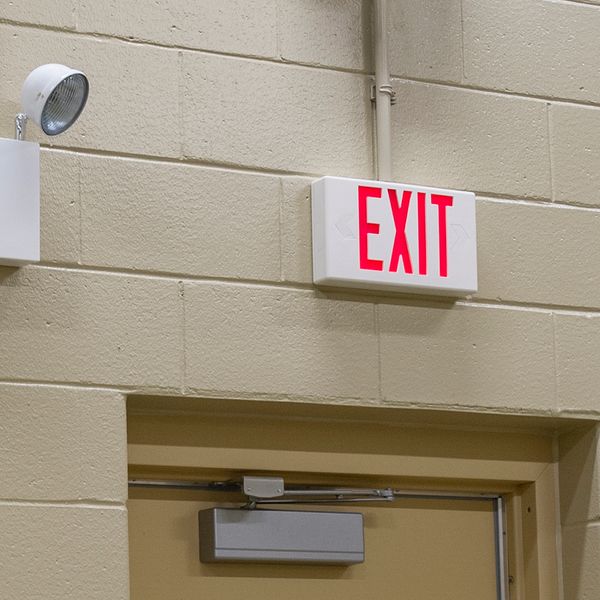Tips on how to clearly mark your exits
Did you know your exit signs need to be marked? An employer was recently issued a serious citation from OSHA for allegedly violating 1910.37(b)(2), Exit Routes and Emergency Planning, which requires employers to ensure exits are visible and marked with an “Exit” sign. OSHA’s proposed penalties for the violation total $8,929.00.
Time is usually paramount during an emergency, and a ‘wrong turn’ could prove deadly. Do your employees know where all the exits are in your workplace? If not, you need to ensure that proper exit route signs are posted, immediately apparent, and always visible.
The exit is this way
OSHA requires that if the direction of travel to an exit or exit discharge is not immediately apparent, signs must be posted along the exit access indicating the direction of travel to the nearest exit and exit discharge. Additionally, the line-of-sight to an exit sign must be visible at all times. If an OSHA inspector could get lost attempting to exit your facility, you need exit signs. If the inspector can find the exit immediately, no exit sign would be required.
Not an exit
OSHA does not require a specific number of signs to mark an exit access, but each exit door must be marked. OSHA also says that if there are doors, passages, or stairways along an exit access that could be mistaken for an exit, they must be marked ‘Not an Exit’ or be identified by a sign indicating their actual use (e.g., closet, storage, maintenance, janitor).
Each exit sign must have the word ‘Exit’ in plainly legible letters not less than six high, with the principal strokes of the letters in the word “Exit” at least three-fourths of an inch wide. No other words or other languages are permitted per the standard. If you have employees with language barriers, you must ensure they understand what the word ‘exit’ means.
The sign itself must be visible and distinctive in appearance. The color of exit signs is addressed in a September 14, 1972, Letter of Interpretation in which OSHA says, “Any color, or color combinations, that is readily visible or distinctive in appearance on exit signs is acceptable to OSHA. Local building codes may require a certain color, but our standards do not.”
Placement and markings
OSHA does not specify the height at which an exit sign must be displayed, only that the sign must be “clearly visible.” The Life Safety Code does, however, specify the placement of exit signs for those placed above doors and directional signs used along an exit route. For example, it says that the bottom of an egress marking must be located at a vertical distance of not more than 6 feet, 8 inches above the top edge of the egress opening intended for designation by that marking.
An exit sign should provide a contrast with any decoration, interior finish, or other signs that may be in the vicinity. There should also be no brightly illuminated signs (other than those for exit purposes), displays, or objects in or near the line of visions of the exit sign that could detract attention from the exit sign itself.
Also, OSHA does not require exit doors to be numbered; however, numbering doors is an effective means of directing people or services (e.g., fire rescue and police) to a particular location at your facility. Whatever color or size of the exit sign used, it must be illuminated. Again, exit signs serve as a beacon to individuals looking for an exit discharge when conditions are such that low light, smoke, or mist would make a sign difficult to see.
Key to remember
Ensure your exits are properly marked using an exit sign that is visible and distinctive in appearance.




















































